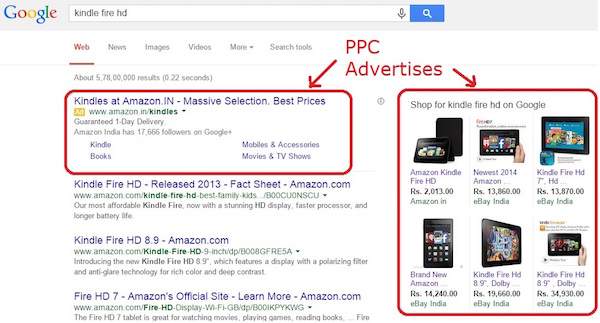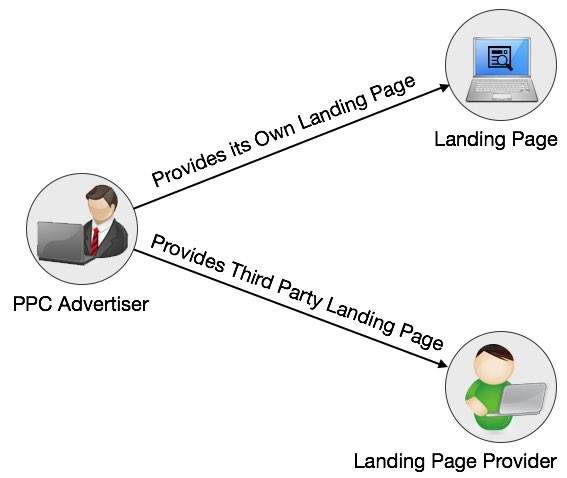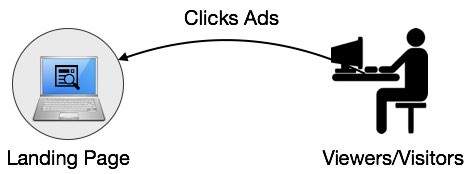We have the Internet that provides a huge platform for advertising
products and services online. Advertisers around the world have shown a
keen interest in making good use of the Internet that is omnipresent
these days to market various products and speed up their business
activities by reaching out to numerous users.
You might be aware of the conventional methods of push marketing that involves the use of brochures, television ads, radio ads, banners, bills, balloons, etc. where people are driven to hear, listen, and view the product or service they can get.
Quite contrary to the traditional model, the recent methods of internet marketing involve innovative techniques to catch more eyeballs and pull online traffic to visit, listen, view, or buy a product or a service that is on offer. It is done through a model that is now being widely regarded as Pay Per Click (PPC). It is a successful model for internet advertising that directs online traffic to particular websites, where the advertisers pay the publishers a certain amount when their ad is clicked.
Here, in this introductory chapter, we will provide an overview of PPC as a concept and explain the role of its entities involved in the entire workflow of PPC advertising.

Whenever a user clicks on an ad, the link directs the user to the product’s website. At the same time, the product or service provider needs to pay some amount to the search engine, such as Google.
Behind every successful PPC campaign lies a catchy ad that can attract the attention of online users. Advertisers focus on the following aspects while creating an online ad:
Google AdWords is an example of a popular advertising system. It facilitates businesses to publish ads on Google’s search engine.




When Google launched its AdWords solution for PPC marketing, heavy activities started in the domain of PPC. In addition to Google, a number of search engines such as Yahoo, Bing, 7Search, ABCSearch, and Findology provide PPC ad hosting.
You might be aware of the conventional methods of push marketing that involves the use of brochures, television ads, radio ads, banners, bills, balloons, etc. where people are driven to hear, listen, and view the product or service they can get.
Quite contrary to the traditional model, the recent methods of internet marketing involve innovative techniques to catch more eyeballs and pull online traffic to visit, listen, view, or buy a product or a service that is on offer. It is done through a model that is now being widely regarded as Pay Per Click (PPC). It is a successful model for internet advertising that directs online traffic to particular websites, where the advertisers pay the publishers a certain amount when their ad is clicked.
Here, in this introductory chapter, we will provide an overview of PPC as a concept and explain the role of its entities involved in the entire workflow of PPC advertising.
About PPC Ad
PPC stands for Pay Per Click. It is an internet marketing model where the advertisers use the publishers’ website to market their products or services through ads. The publisher gets paid by the particular advertisers when a user clicks on their ads. It is a pull-type internet marketing of buying user visits to a site.
Search Engine Advertising
One of the most popular forms of PPC marketing is Search Engine Advertising (SEA). It allows advertisers to bid for placement of ads in the search engine’s sponsored link, when a user searches for a keyword that is relevant to a product or a service.Whenever a user clicks on an ad, the link directs the user to the product’s website. At the same time, the product or service provider needs to pay some amount to the search engine, such as Google.
Behind every successful PPC campaign lies a catchy ad that can attract the attention of online users. Advertisers focus on the following aspects while creating an online ad:
- Research for effective keywords related to a product or a service
- Choose the right keywords
- Group the keywords relevantly
- Arrange the keywords to create an advertise
Google AdWords is an example of a popular advertising system. It facilitates businesses to publish ads on Google’s search engine.
Entities Involved in PPC Advertising
The following entities are involved in PPC Advertising:- Product or Service Seller
- PPC Advertiser
- Landing Page Provider
- Landing Page
- Viewer or the Visitor

A product/service seller contacts advertisers for PPC based Ad programs.

PPC Advertiser creates Ads and provides landing pages for Ads.

Users click the Ads and visit the landing pages.

PPC – Bird's eye view
Workflow of a PPC Ad
The workflow of a PPC ad is as follows:- First of all, the advertiser creates an online account and loads her account with some money – say Rs 5000. Note that some organizations allocate their PPC budgets in hundreds, thousands, or even millions of rupees per month.
- The advertiser creates a small text ad. In some cases, a PPC ad can include images.
- The advertiser specifies a list of keywords associated with the ad.
- The advertiser determines how much she is ready to pay each time someone clicks on the ad.
- On the buyer’s side, a user visits the search engine – say Google.com, enters one of the keywords or keyword phrases - say “Kindle Paper white” and clicks the Search button.
- The search engine finds the matching ads and places them on the results page.
- If a user clicks on the ad, she is taken to the advertiser's website, and the advertiser is charged for the click.
History of PPC
PPC ads have been in existence over a decade now. The term PPC came into existence during the year 1990 when organizations started conducting their business on the Internet. One of the companies that pioneered the concept was goto.com. Yahoo took it over in 2003.When Google launched its AdWords solution for PPC marketing, heavy activities started in the domain of PPC. In addition to Google, a number of search engines such as Yahoo, Bing, 7Search, ABCSearch, and Findology provide PPC ad hosting.
Properties of a Compelling PPC Ad
A compelling PPC ad has the following properties:- It is a part of a closely-knit ad-groups.
- It can address the desired search queried by the users.
- It takes the user to an appropriate landing page.
- It drives the users to click on it and explore.
General Formula for Calculating PPC
The basic formula of calculating PPC is:Pay per click ($) = Advertising cost ($) ÷ Number of ad clicks
Advantages of PPC
PPC helps in branding and creating leads as well, both in parallel. PPC provides quick results in contrast to SEO results that are equally important but may take months or even years to materialize.- Quick Actions - PPC gives immense traffic, quick results, and more hype branding in a short span of time.
- Negligible Initial Investment - Search engines do not charge fees to insert a PPC ad or to set up an account. The user pays only when someone actually clicks on his ad.
- Business Gets Noticed Globally - A business can get global recognition, even if it has a small local setup.
- Instant Results - As compared to SEO methods, PPC ads can deliver faster response, if quality ads are posted.

No comments:
Post a Comment